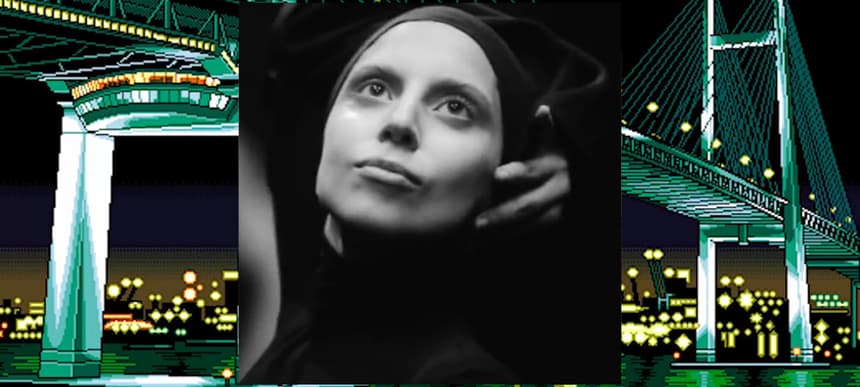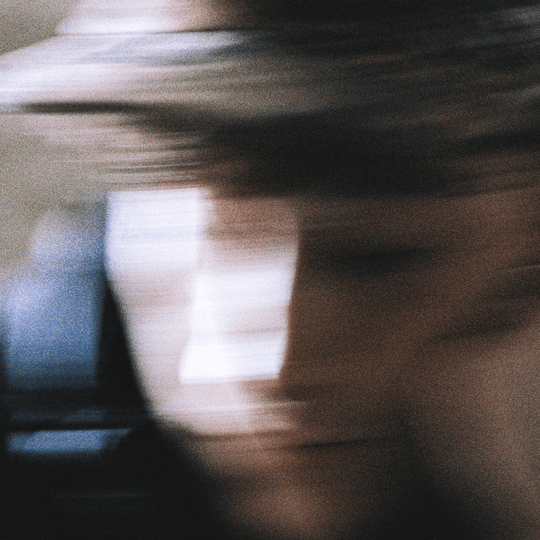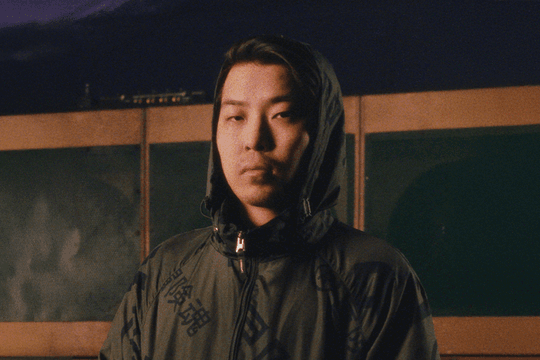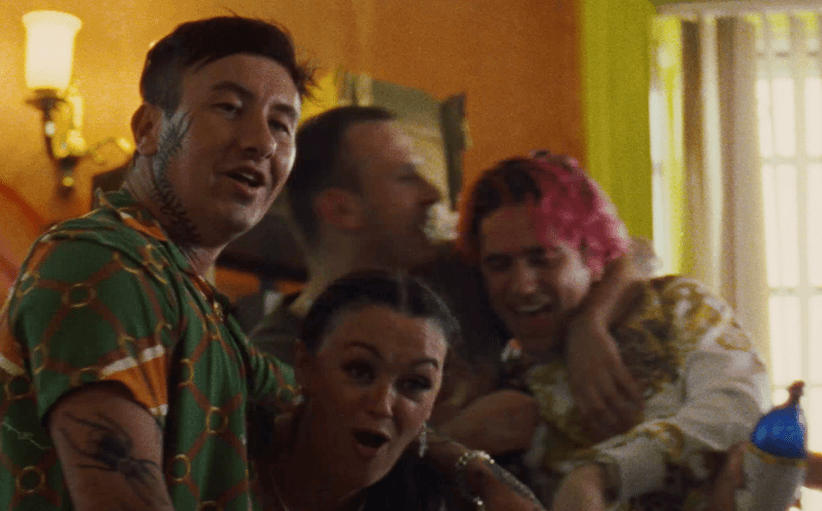
Remixing reality with Oneohtrix Point Never and Lady Gaga
I am a fan of Lady Gaga. I follow her work, I’ve seen her live and have the 2010 tour t-shirt to prove it. I’ve waited alone in the snow and sub-zero temperatures for nearly an hour outside Gdańsk’s ERGO arena to see her; a chance to behold “Mother Monster” in obscene stilettos while playing a burning grand piano with one hand, suggestively fingering the neck of a guitar held by a muscle-bound guitarist with the other.
As for Oneohtrix Point Never, until recently I’d had little more than a cursory engagement with Daniel Lopatin’s work. Taking small interest in ‘Rift’ and ‘Replica’, I preferred to listen to Laurel Halo’s vocal on the creepy 80s synth-pop simulation of Strawberry Skies from his Joel Ford collaboration, Games, and freaking myself out to the eerie nobody here video, featuring the lyric from Chris de Burgh’s Lady in Red, on loop and drained of its humanity by reverb. A swaying rainbow-coloured triangle acting as small solace in the face of the profound emptiness that the two-minute track, on Lopatin’s “Sunsetcorp” YouTube account, evokes.
Not so impressed by his live performance with Tim Hecker at St. Catherine’s Church during last year’s Unsound – aside from the odd mock chorale patch surfacing from the quaking undertow of combined noise the two generated – I was always more intrigued by Lopatin’s gross cultural appropriations, whether as Chuck Person on his ‘Eccojams Vol.1’ or the Soviet animation Nu, pogodi! on his Replica video. So when Problem Areas, from his recently released ‘R Plus Seven’ album, rolled in at around the same time as Lady Gaga’s Applause, I was struck by the similarities between the two. There was Lopatin’s glossy, hyperreal soundscape functioning on contrasting textural elements, bounding and recoiling across near-tangible space; its fragmented and fractured text-to-speech oddly resonating with the male vocal loops and melodic synth line of Applause. But it wasn’t so much about the sonics (because how could one legitimately draw parallels between an eminent though still very underground experimental artist with a pop star?) but their processes. Both Daniel Lopatin and Lady Gaga explicitly exploit and appropriate their influences, from tableau and soft porn soundtracks in ‘R Plus Seven’, to Jeff Koons and Madonna in Applause. In doing so, they not only provoke discourse around the idea of cultural “theft” but what the nature of that theft reveals about its new context.
“Both Daniel Lopatin and Lady Gaga explicitly exploit and appropriate their influences, from tableau and soft porn soundtracks in ‘R Plus Seven’, to Jeff Koons and Madonna in Applause. In doing so, they not only provoke discourse around the idea of cultural ‘theft’ but what the nature of that theft reveals about its new context.”
Like most people, I was always aware of Lady Gaga’s art world exploitation but, noncommittal fan that I was, was willing to let it go for the sake of grotesque spectacle, along with the delusion that these boundary-pushing ideas, lifted from the underground, were being given a platform they wouldn’t otherwise have – pre-existing ideas surrendered in the interest of some sort of “greater good”. But then, it quickly became apparent that not only was Lady Gaga literally capitalising on the ideas of others – with little, if any, remuneration or credit given to the artists themselves – but that those ideas were being dismantled and disembodied in the process. As counter-culture commodified, its symbols of abjection and dissent become another outfit to be worn, transgressive acts stripped of their meaning, incorporated and rendered impotent in opposition to capitalist/ patriarchal interests. It’s for this reason Applause, with its infinite appropriations and self-congratulatory pat on the back, was not just boring to me, but offensive.
The plan for this piece, then, was to compare Lady Gaga to Lopatin’s sonic sculptures. His work, as somewhat independent of capital by virtue of its existence within a musical niche (albeit near the top of it), could illustrate how to appropriate the “right” way. Here his influences and exploitations – spanning philosophy, poetry and visual art, recognisable Ableton Live 9 presets and Omnisphere Spectrasonics patches – have been taken out of their original context and remixed in a way that make them unique to Lopatin’s own personal narrative. When I talked to him during an interview for Electronic Beats, Lopatin acknowledged the exploitative nature of his work, saying he was an “appropriation artist” but qualifying: “I think the difference between me and the blunt exploiter that just takes for whatever reason is capital gain. There are other exploiters that will honour their kill,” he said laughing, “I like to think that I’m honouring my kill through ritual and through my own way of dealing with it.”
Years ago, when Not Not Fun wound up at the centre of Simon Reynold’s Retromania discourse – a theory arguing that, in the midst of economic and technological upheaval, a sense of yearning for the apparent stability of the past gave rise to focused nostalgia in music – label co-owner Britt Brown countered the suggestion that this sort of referentialism is somehow a new phenomenon in an email interview: “I think reinterpreting old tropes (whether primitively, abstractly, offensively, surreally) has always been a strategy of artists for moving forward.” In revisiting that conversation, it occurred to me that, maybe, it’s not so important about identifying whether or not appropriation is reprehensible or novel in itself and focus on what the nature of the appropriation reveals about a particular culture.
It should be noted that both Lopatin and Gaga’s influences, perhaps despite themselves, tend to be highly gendered. Lopatin references French composer Olivier Messiaen, Bruno Latour and, philosopher Manuel DeLanda, while working with synthesisers that he described in an interview with FACT Magazine as having “strangely misogynistic names of presets”. Gaga’s icons include Cindy Sherman, Marina Abramovic and Alexander McQueen, among others. The latter not only represents the sexual ‘other’ but also reveals itself as being bound to the physical, particularly because Gaga applies these remixes to her own body: a recreation of Botticelli’s Birth of Venus and literally modelling herself as one of Koons’s balloon swans. Lopatin’s object fetish comes in the form of artist Takeshi Murata’s physics-defying Artificial Still Life, featuring a smashed iPhone, Cyborg VHS tape and fragmented electric guitar suspended in mid air. His experience is presented as something outside of himself; a disconnection of mind from body and a privilege not afforded Lady Gaga.
“I think the difference between me and the blunt exploiter that just takes for whatever reason is capital gain. There are other exploiters that will honour their kill. I like to think that I’m honouring my kill through ritual and through my own way of dealing with it.” – Daniel Lopatin
“Essentially using any material is a type of appropriation,” says Nate Boyce, a friend and long-time collaborator of Lopatin’s, responsible for the visual component of his live shows as well as the Still Life (Excerpt) video. “You’re appropriating those materials that we all have experiences with. We’ve all seen CGI and we’ve all seen different types of rendering,” he says, comparing Lopatin’s “ersatz instrumentation” – a ‘King David’s Lyre’ patch here, text-to-speech generation there – to his own work within synthetic imaging, thinking of sound as “this sculptural material that you can deal with in a purely formalistic way.”
That way of working could perceivably be viewed as something inherently ‘masculine’, where Lopatin collects together these “tools” and reveals them as such, most explicitly in a video produced in collaboration with Jon Rafman (incidentally, it was one that was reproached for not revealing its online sources by the owner of a Tumblr it largely drew from). Here, a terrifying alternate recording of Still Life – whose amended title Still Life (Betamale) alone points to a particular gender – plays while a montage of Anime porn objects, primarily women, is interspersed between haunting images of lives dominated by computers, playing on the implicit masculinity of technology. After all, the so-called STEM fields – science technology, engineering and mathematics – are still disproportionately male-dominated and, as mentioned before, what Lopatin calls the “misogynistic” presets of his synthesisers points to who’s making these tools that govern his work (and, ultimately, modern life). In her own personal tableau of “living scenes” from Applause, though, the object is Lady Gaga herself.
Picture a mid-show scene-change during the Monster Ball, the stage flanked by monumental screens featuring Lady Gaga in various S&M poses; images that resemble the transgressive photography of Robert Mapplethorpe. Then picture Lopatin and Boyce, in the dark and motionless behind their respective equipment set-ups, where the synthetic has subsumed organic in indistinguishable forms created by computer software. Here, Boyce processes and sequences the “cosmic horror” of his images, transition and feedback manipulate a synthesised morphogenetic tech-future through jitter. Images of living cybernetic creatures are presented in a format resembling the opening sequence of a children’s live action TV show and named after geographical regions of New Hampshire where Lopatin grew up. Floating squares display 2D reproductions of abstract sculptor Joseph Slusky’s work, manifesting Boyce’s interests in, as he says, “what’s lost and what’s gained when an object becomes an image”.
The question then becomes, what’s lost and what’s gained when Lady Gaga becomes an image? To take the Applause video as an example, from the cloying jester Pierrot and reproduction, of a reproduction, of a reproduction of Fritz Lang’s Metropolis – via Madonna’s Express Yourself and Gaga’s own 2010 release Alejandro – it’s in the disconnection from an image’s original context, the seemingly empty space between that its meaning lies.
Lady Gaga and Oneohtrix Point Never are products of that Warholian Frankenstein that fused art, advertising and celebrity culture irrevocably. Except that while Lopatin is sat quoting Andy Warhol at Warp headquarters (“I never read, I just look at pictures”), Lady Gaga becomes those pictures by emulating his ‘Marilyn’. By juxtaposing these two seemingly disparate artists – not only as examples of majority versus minority culture, but the potential engagement we have as consumers – it’s our role and responsibility to identify and recognise these references and appropriations, and learn to understand our positions in relation to them. As an artist’s audience expands and grows in a globalised context, with the conversation extending well beyond an educated niche scene with its own shared cultural language to draw from, it’s more important than ever to pay attention. As Britt Brown put it most succinctly: “Everything’s always been referential, we just have more hyperlinks now.”
Warp released ‘R Plus Seven’ in October 2013. Interscope will release ‘ARTPOP’ on the 8th November 2013.













